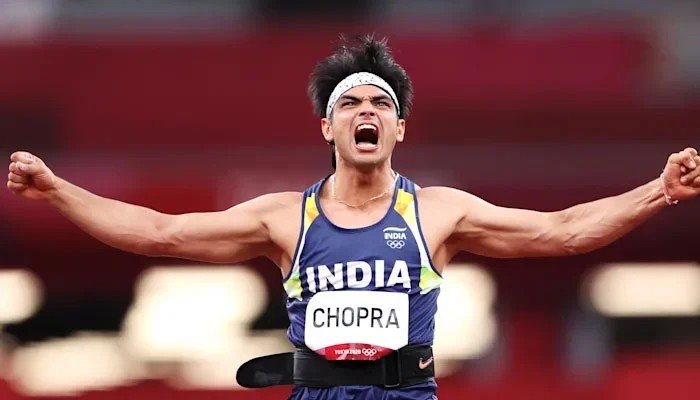ISLAMABAD: The Sports Authority of India spent around PKR100 million on Olympic gold medalist Neeraj Chopra during the past four years, as per a report published in The News.
Neeraj Chopra became the first Indian track and field athlete to have won the gold medla in the Olympics in over 100 years. He won the gold medal in the javelin throw at the Tokyo Olympics 2020.
The moment he broke the Under-20 Youth Games record in 2016, Chopra stepped was being keenly observed by the Indian Sports Authority, who made every effort to bring the best out of him by hiring the services of renowned coaches and giving him the required international exposure.
The sports authority also helped him by giving him stipends and other necessary financial assistance.
Though Chopra has hit the goldmine since his winning throw at the Olympics, he got all the support from the Indian government, the corporate sector and all relevant institutions in the run-up to Olympics 2020.
In all, Chopra’s preparations for the Olympics cost the Indian Sports Authority a whopping around Rs100 million. He is an athlete who was also funded under the TOPS scheme.
Neeraj Chopra burst onto the scene when he broke the Under-20 world record at the 2016 IAAF World U20 Championships. His attempt of 86.48m could have won him a bronze medal at the 2016 Rio Olympics but he missed the qualification’s deadline and had to wait five years for this moment.
Five years saw his medal campaign supported by the government, TOPS scheme and also by private sponsors JSW but, how much did the government spend on Neeraj’s training and preparations in this Olympics cycle? Here are some details of the amount spent on the athlete to groom him for Olympic glory.
The government spent INR48,539,638 on Neeraj for his training and overseas competitions for the 450 days leading up to the Tokyo Olympics, according to the Sports Authority of India.
Dr Klaus Bartonietz was made Neeraj’s personal coach following his elbow surgery in March 2019 and the government has paid him INR1,22,24,880 as salary to date.
Source: https://www.geo.tv

